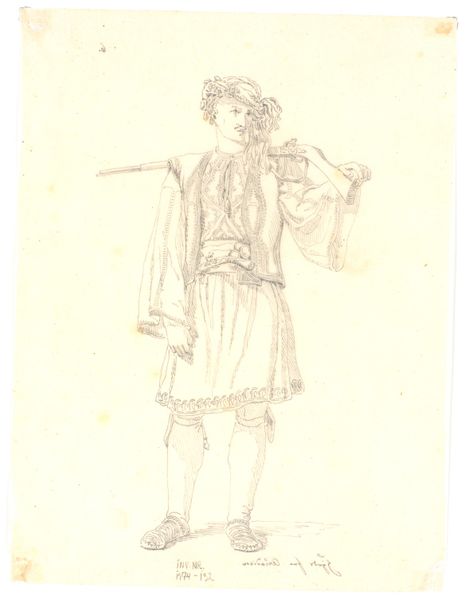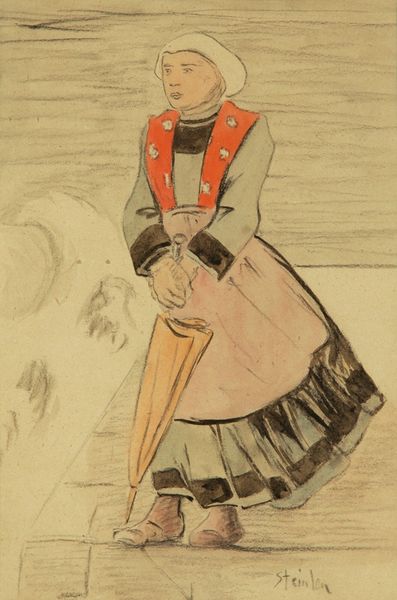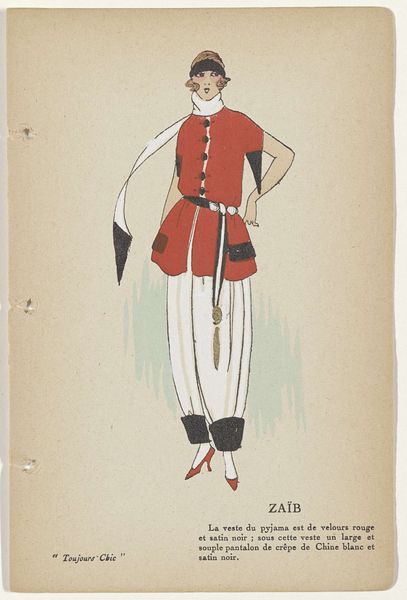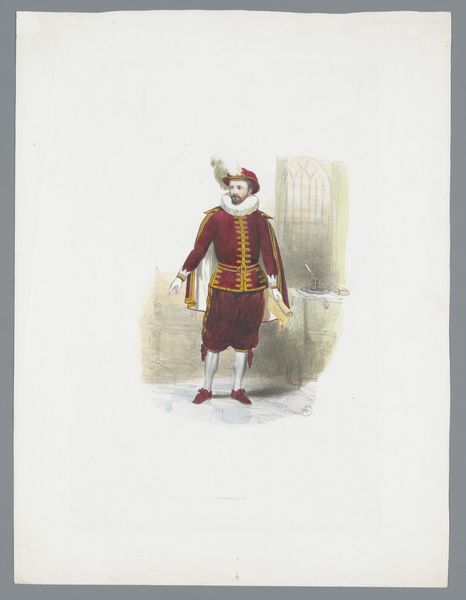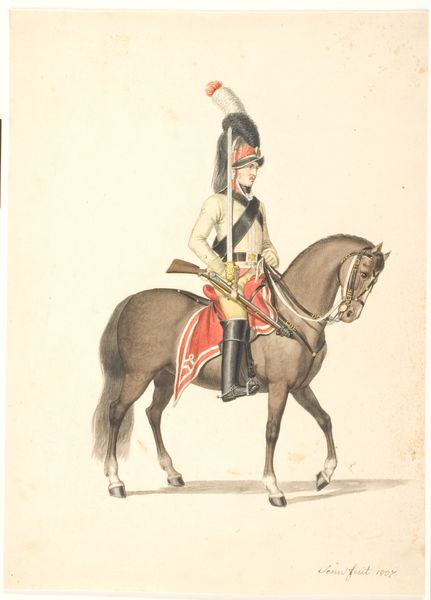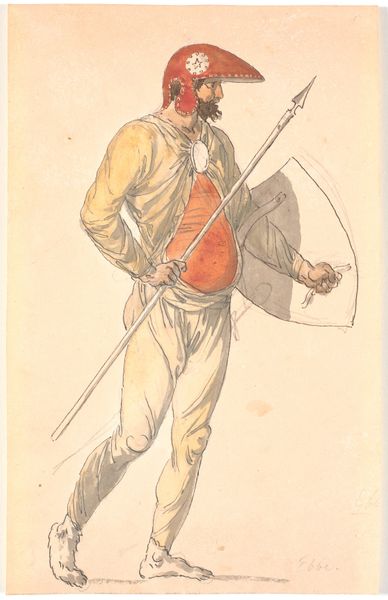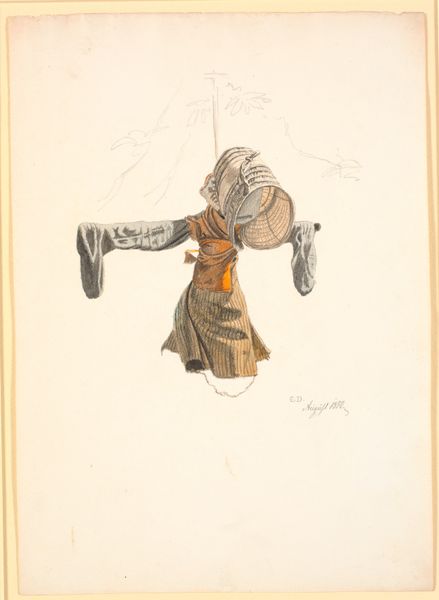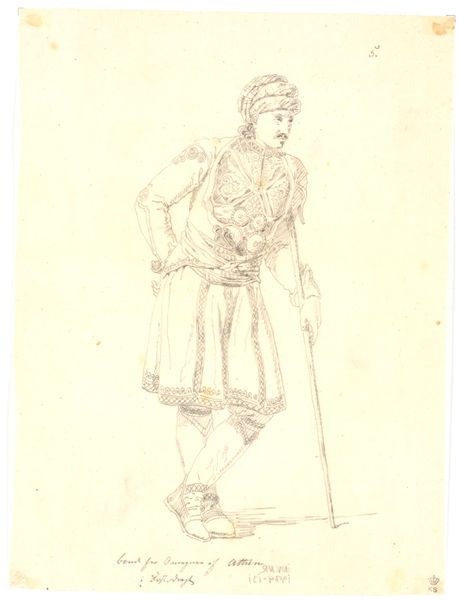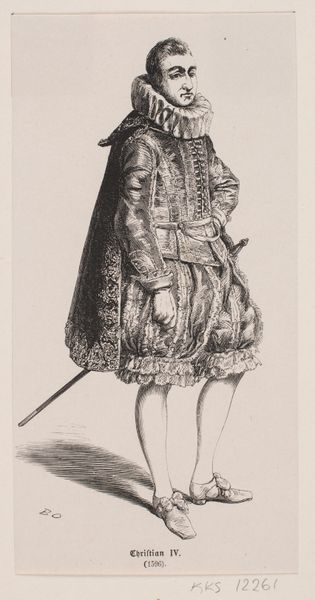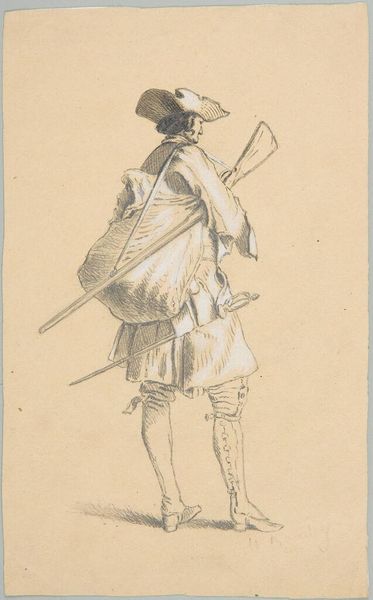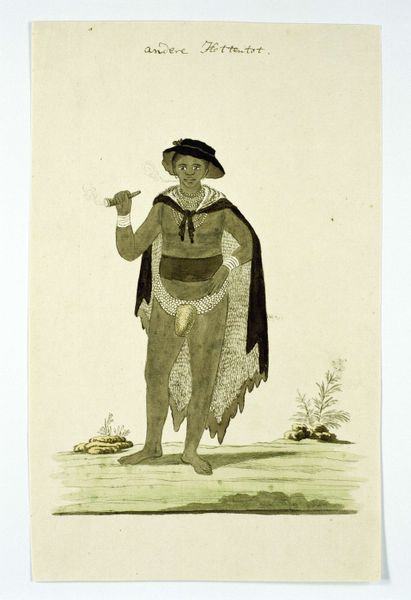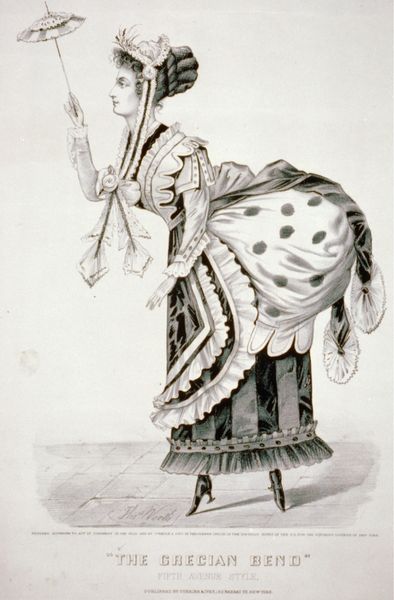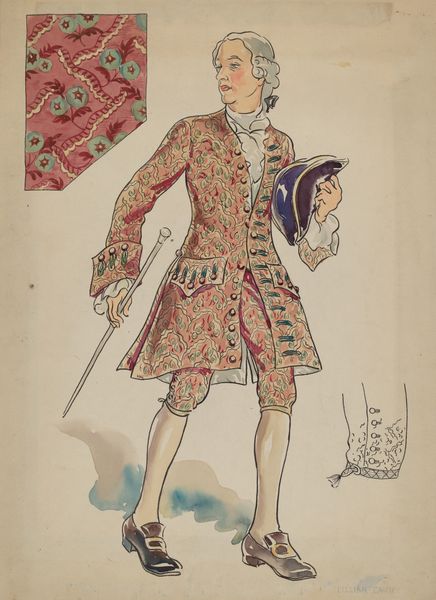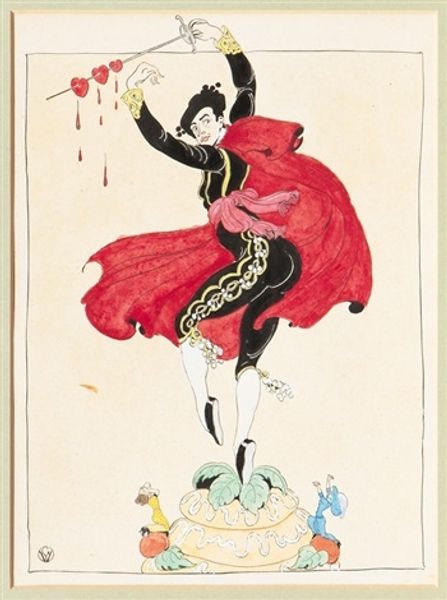
drawing, watercolor
#
portrait
#
drawing
#
watercolor
#
watercolour illustration
#
genre-painting
#
history-painting
#
watercolor
Dimensions: 268 mm (height) x 180 mm (width) (bladmaal)
Curator: Good morning. We’re standing before Johannes Senn's “Kongelig kusk,” or “Royal Coachman,” rendered with watercolor on paper in 1807. Editor: What a striking figure! There’s a rather... theatrical quality, I think, amplified by the crisp rendering and somewhat peculiar composition. It’s visually very arresting with a subdued color palette that still highlights the coachman's crisp uniform. Curator: Indeed. Senn's work encapsulates the era’s fascination with capturing types and professions, particularly within the royal sphere. Notice the detail in the coachman’s red coat – a deliberate accentuation of his station through clothing, reflecting a period of significant social stratification. Editor: Absolutely. The emphasis on the red livery does serve as a potent signifier of status and allegiance. What interests me is how the perspective of the painting highlights both flatness and depth – notice the seat under him and his foot, one can tell the location from the color gradients despite the almost graphic approach to the scene. This stylistic interplay between illusion and surface is definitely appealing. Curator: Furthermore, consider how Senn, though working within the conventions of portraiture, presents the subject in a highly stylized, almost typified manner. This moves beyond mere likeness to comment on the very performance of social roles at the time. Think of this representation as contributing to a larger dialogue concerning power and visibility within the Danish court. Editor: The "performance" aspect is key, as it does seem the artist may be commenting on a very staged moment within the life of a royal. However, what of the negative space, that seems an odd approach, one wonders if this indicates this figure existing as only a fragment of a larger composition that now no longer exists or has been cropped to only what we see before us. Curator: That's a compelling point regarding the negative space. Senn challenges the boundaries of the depicted object and a larger absent world beyond the paper that invites our consideration to reflect upon not just what it shows, but also on what it hides. Editor: Senn certainly offers much to consider regarding not just the visual appearance of an era, but also its inherent contradictions, which he then represents beautifully. Curator: And indeed, “Kongelig kusk” exemplifies not only formal ingenuity but offers insights into a key period of visual construction of power and status.
Comments
No comments
Be the first to comment and join the conversation on the ultimate creative platform.
